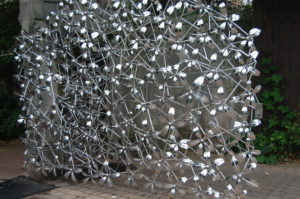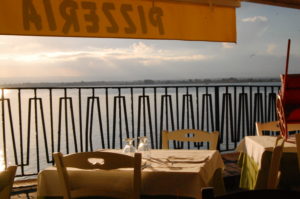IGA (Austellung means Exhibition) ran from Easter until Sunday 15 October this year. No better birthday present for a gardener could be imagined, especially as it came as a surprise on searching for things to do on our short break.
As our friends said last time, it’s easy to be “museumed out” and we thought there would be time on another visit to renew acquaintance with the wonders of Museum Island, the New and the Old Galleries. We had however reserved the splendid Berggruen Collection for a return and discovered there was a Surrealist exhibition on the same ticket. Another review, however: this is for IGA.
Berlin has been green for more than a century: allotments were made available to citizens at the same time as the UK was building garden cities. Berliners quickly took to spending weekends in their summer houses. This gave rise to the grim novel “What Now Little Man?” in which the central character ends up living penniless in the allotment house of an acquaintance while the threat of the Third Reich develops. Today, though, all is light and delight. Kienberg Park in the suburb of Marzhahn-Hellersdorf is now a huge public area of green with permanent gardens in place after the exhibition that wil inspire gardeners of Berlin to exceed even their past achievements.
We arrived at the U-Bahn station Kienberg, now bearing the additional name Garten der Welt and, after a moderate queue for tickets joined another one for the cable car to the higher area, where most exhibits could be found.
A kind of Chelsea-meets-Hampton-Court-at-Harlow-Carr, it had two huge structures that the RHS would label Floral Marquees. Inside were competitive displays with a strong emphasis on recycling and sustainability. Everybody was enjoying the humour of old jeans used as growing containers (upright growbags?) and there were many other uses of redundant items such as plastic bottles, metal cans and even light bulbs. Eating in the garden was another category. Much of it displayed with humour.
Having eaten a huge hotel breakfast we wished only for a glass of wine and, after passing the stall selling magnificent secateurs (forbidden on a flight), we headed for the first international gardens. Two were from South America, both oases of calm and elegance we could have stayed in for hours. The third was Chinese: very clever but not meeting our criterion of a place for rest and reflection.
There was an historical theme too, with a Renaissance garden and a knot garden. Both were excellent, but the contemporary note was ideally struck in the solutions to small or even no space in an urban setting. The no space invited vertical planting and the clever use of a fish tank to fertilise soil from detritus.
The alternative to a static garden was one that would move to suit the mood or ideas of the gardener: plants, even trees, were in containers made from pallets set on wheels so they really could be moved to create different arrangements.
In keeping with this creativity there were entertainments – as if the cable cars, water play area and dry bobsleigh run (up to 40 km/hr) were not enough for any age of even silver child – stiltwalkers and saxophone playing “cockerels” were performing. For the in-between age the amphitheatre below us had a country and western group on stage.
A more traditional culture was further down the site, however, with Oriental and Islamic gardens, ending for us in the exquisite Japanese creation that was the epitome of Zen. We had read that Japanese gardens in many countries – we’d visited one in Belgium – were in need of refurbishment: this was a model for that work, which is we understand in progress.
Tiredness, as we realised we had spent nearly five hours in the park, could not keep us from the oldest garden on site: the Karl Foerster garden had been established over 50 years ago and still maintained his policy of seasonal progression and colour. It had been refurbished for the exhibition and would continue as a focal point of the park in years to come, although October was not perhaps its most favourable month.
Thankfully, we found the free shuttle bus outside the gate and were soon at the station for our return to the city centre. Yet again, Berlin had exceeded our expectations (not to mention stamina).










